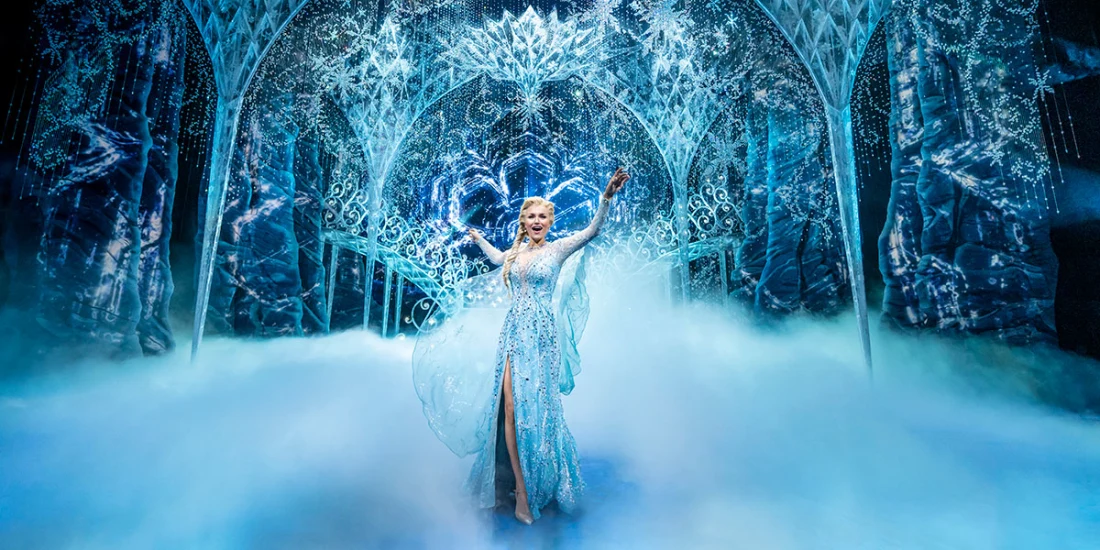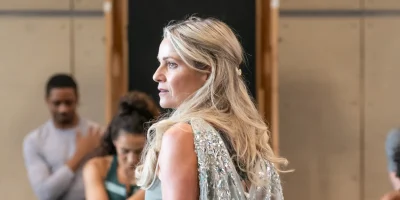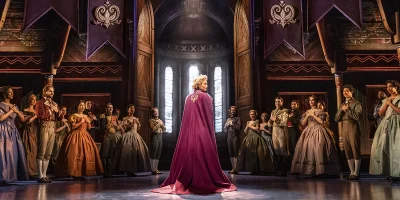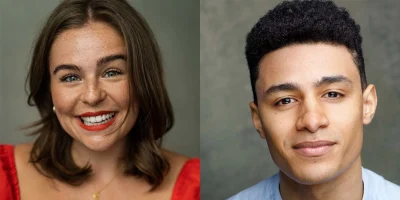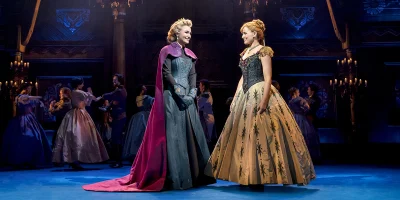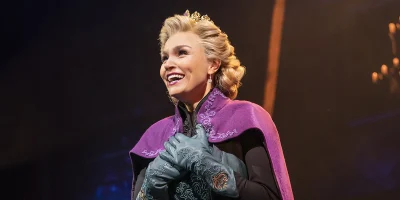
Disney Theatrical President Thomas Schumacher on updating musicals and the role of the audience in making theatre
Thomas Schumacher, the longtime president of Disney Theatrical Group, isn't scared of making big changes - whether its adding a song to a time-tested musical, testing a show in a new international city, or reopening multiple productions around the world in the wake of a global pandemic.
"There are real things in life to be afraid of in musical theatre isn't one of them," Schumacher says.
His latest venture in London: opening Frozen in the West End at the Theatre Royal Drury Lane. The beloved animated film about the unbreakable bond between two royal sisters premiered on Broadway in 2018, but the show has gotten a makeover for the West End, complete with new songs, set pieces, and an updated book.
"I just feel like why wouldn't you, if you could?" Schumacher says of updating shows. "It's a living, breathing organism, so why not?"
But Frozen isn't the only thing on Schumacher's docket. From queuing up the musical for an Australian debut this fall to reopening the Disney shows on Broadway to launching a UK tour of Beauty and the Beast to countless other international productions, Schumacher is on a mission to bring theatre back around the world.
We chatted with him about producing theatre internationally, updating and changing shows, and why the audience is so important to making theatre.
Last time we chatted, you had just opened Frozen on Broadway, so it feels like a full circle moment to be chatting again with a brand-new production in the West End.
When the pandemic hit, it became immediately apparent to us that it would be near impossible to reopen three branded Disney shows at the same time... But also, because we thought we were going to be loading in [in London] six months later, we all met and said, okay, we could deploy this and this from the New York production and ship it to London.
Obviously, it's a new production and it's substantially bigger than New York. It's got huge elements in it: the bridge and the hallway. "Let It Go" looks different. But there are elements of the bones that we were able to just ship over from New York. So it's a kind of bittersweet thing because you look at that stage here in London at this glorious theatre and go, "Oh my goodness, it's also a little bit in New York up on that stage."
The Theatre Royal Drury Lane renovation is so gorgeous; it almost feels like you're walking into Arrendelle.
Doesn't it? What I love is we just did a proper show. We didn't goof around with the space. We just did a proper show, and it fits beautifully and I couldn't be prouder of it.
I was lucky enough to get to see the show on Broadway and in the West End, and I was struck by some of the changes and updates you made for London. Can you talk about the decision to make those changes?
I am not a giant believer in that shows stay frozen and or stuck in aspic; they don't need to. Nineteen years ago when Tony Braxton came into Beauty and the Beast to play Belle, we added a song, and since then, we've actually taken two songs out. On The Lion King's 10th anniversary, we cut 12 minutes from the show.
When we were in New York and we were getting ready to mount the national tour [of Frozen], one of my favourite of the new songs was a song called "True Love" that Bobby [Lopez] and Kristen [Anderson-Lopez] wrote late in Act Two. But as much as I love the song, it wasn't working. And then at the same time I met with Bobby and Kristen and said, "What would happen if early in the second act, if Anna and Elsa were able to actually have a conversation about what's happened?" And we talked a little bit and Kristen said, "I already have an idea." And the next day she came back with an outline for the song, "I Can't Lose You," and that song is so important that it really pays off at the end.
We've also done some tightening, some other changes. "Let It Go" is pretty much completely re-imagined. And certainly "What Do You Know About Love"...does an amazing stunt that could only be done at the Theatre Royal Drury Lane. You're not going to see this bridge anywhere else.

You've opened Disney shows all around the world. Do you consider different global audiences as you're conceiving productions for different cities?
I always give credit to my pals here, Cameron Mackintosh and Andrew Lloyd Webber, because they really opened up the model of how to work around the world. And lord knows we've exploited it. So, I was in Australia from late October until almost Christmas, working on Frozen when Australia was open before it got kind of messed up with, I've been through five quarantines, but that was my toughest quarantine.
We've had people everywhere. There's 73 of us that are kind of bouncing around the world right now, trying to keep it all going. The shows have to be suited for their city. There's one significant change in Frozen that's culturally based in Holland. The number "Hygge" is getting reconceived in Holland. Japan is always very authentic to our original production. Although in translation, culturally, certain things slightly shift. We've reinvented shows like Tarzan, which played on Broadway for a year and a bit but didn't work at the level I would have wanted, but still it ran for 10 years in Germany because we reconceived it.
It's amazing how different audiences and cities can appreciate different shows.
You have to lean into what the local audience would want. Also, we're fearless about it ...I've never found the creative teams resistant to it either. This Beauty and the Beast I'm doing in Liverpool is complete re-conception from what was on Broadway.
How have you reconceived the show?
We've cut some songs, we've cut some material. I don't think a single person would ever know, but keeps it moving, keeps it fresher. Belle's a woman who takes care of herself and has agency. She doesn't need to go through the whole show with an apron, if you know what I mean. It is sending a message about who Belle is that is no longer accurate. The other thing that Belle does in this production, is when she picks up her books to read, she puts on a pair of glasses. Imagine you're an eight-year-old girl who's told you have to wear glasses and everyone's teasing you and you'd go watch Belle and she's wearing glasses and the whole world's a better place.
I probably was that eight-year-old girl when Beauty and the Beast first came out.
Exactly. Wouldn't you have been happy to know that Belle wore glasses? And I know that sounds like a little thing, but it's metaphoric. That's not like a shocker. If you know the musical, there's a glorious Alan Menken/Tim Rice song that was added to the stage version called "Home." Now it lands and is orchestrated completely differently. Danny [Troob] reinvented it. It's very muscular. Now it's a woman saying: "I have made a deal with this man, and I'm going to honor it. And I'm going to protect my father." And it's the exact same lyric, but the attack is totally different in the song. The way she confronts the Beast, the way she has agency. We also restaged the number "Belle." I don't want to say some guy toss, some lady around, like she's a prop. I want to see her undo him. It's better.
That also reminds me of small changes with Frozen, like Elsa wearing pants.
The original design for Elsa at home was something that she would have just hung out in. But then she had to wear that while she's singing "Monster," while she was essentially arrested, and when they take her into custody. It was quite beautiful, but watching people manhandle her when she wasn't dressed for it was uncomfortable. And so Ann Quart, my co-producer who I don't do anything without, said: "Don't you just feel uncomfortable watching her in those clothes being treated like that?" I said, I do.
And so then we met with Jennifer Lee, who was in doing some bookwork because she co-directed the movie and wrote the screenplay and then wrote the book for the Broadway version, and Jen said, "Well here, let me show you something." She opened up some sketches that were visual development for Frozen 2." And so then [designer] Christopher Oram came in and said, "Oh, I could do that outfit." And it made it in time for opening, right. That we could put her in those pants, which then changed the whole way the Caissie Levy performed it. It gave her strength; it was great.
At the time, I remember it causing a bit of a stir on social media when Caissie posted the sketch.
They're not revolutionary, but I do think they speak to the idea that we're in process, that we stay in process. How do you invent? How do you reinvent? How do you tell it? How does it change for its time? How do you rethink it? The thing about our field...we do it right in front of you because you don't know what you have until you're sitting in the room with a thousand people.
When we were doing The Little Mermaid, we rewrote one section of Sherie Renée Scott's stuff as Ursula three days in a row. And finally, she just took a pen and wrote it on her glove.
And sometimes it doesn't work, but you have to attack it with that willingness to keep reinventing and let the audience tell you that's really important. I often think audiences don't realize quite how much a part of it they are.
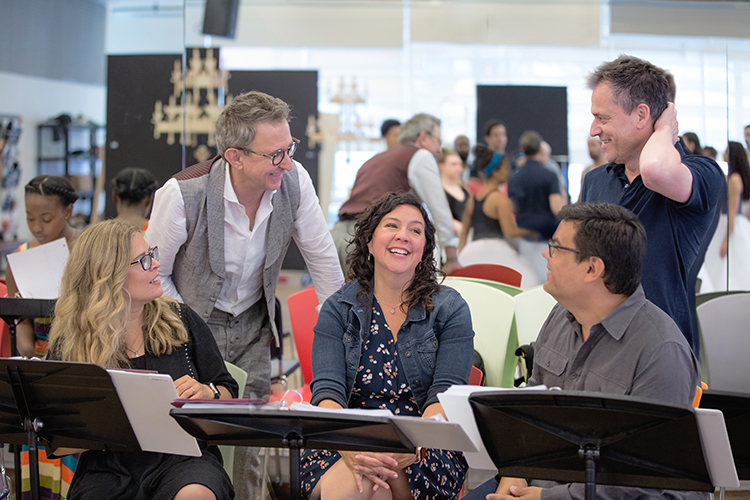
How has the preparation for Broadway reopening been and what does it mean to have shows finally opening?
When the pandemic happened, I was the chairman of The Broadway League. So, I'm the one who actually had to convene everybody and say: "We're shutting down." So my perspective immediately was not how to bring our Disney shows back, but what do we do for Broadway?
And then set against that, I had this whole international thing where it wasn't just New York that shut down. That's why it's so emotional to me because I cannot help but think about the people — the people onstage, off stage, in the orchestra pit, front of house who were thrown into unemployment, many of them not having transferable skills, or certainly transferable skills that anyone wanted to use in that time. The people who became sick, the people I have on my shows who had to relocate back to their home countries, questioning whether they would ever really get a visa to get back in. The challenges were overwhelming because you were thinking the economics of this and how do I protect everyone economically? But also at the same time, there's no fire hose of money that you can just pay them with.
And then, how do you bring them back and do everything you can to make them as safe as you can? We have to remind ourselves: you've never been safe in your whole life. You've just been safer than you would have been if the conditions were different. You're always in a situation by which you say: Is it safe to cross the street? It's safe to get a car? Is it safe to go out at this hour? Is it safe to eat this food? You're always doing this assessment of risk. The entire opening song of The Lion King is about that. And yet, I feel a great responsibility to do everything I can to try to protect every aspect of people's safety, whether it's their health, safety, their physical, proximity to danger safety there, all of that. And it all comes together at this moment in time.
Photo credit: Samantha Barks (Elsa) in Frozen (Photo by Johan Persson))
Frequently asked questions
What is Frozen the Musical about?
Do you wanna build a snowman? The global phenomenon hits the West End, bringing all your favourite characters to life. Telling the now iconic story of two sisters who must save their kingdom and their love for one another, the musical contains all-new songs by award-winning duo Robert Lopez and Kristin Anderson-Lopez. Experience Frozen the Musical — book your tickets at Theatre Royal Drury Lane today.
Where is Frozen the Musical playing?
Frozen the Musical is playing at Theatre Royal Drury Lane. The theatre is located at Catherine Street, London, WC2B 5JF.
How long is Frozen the Musical?
The running time of Frozen the Musical is 2hr 15min. Incl. interval.
What's the age requirement for Frozen the Musical?
The recommended age for Frozen the Musical is Ages 6+. Under 16s must be accompanied by an adult ticketholder (18+). Under 4s will not be admitted. Every customer must have their own ticket. To ensure everyone enjoys the show, little ones need to be able to sit in their own seat without any help..
How do you book tickets for Frozen the Musical?
Book tickets for Frozen the Musical on London Theatre.
What are the songs in Frozen?
Frozen the Musical features many well-known songs from the movie, including “Let It Go” and “For the First Time in Forever.” You can also expect to hear a range of new songs written for the show.
Who wrote Frozen?
The original creative team from the film, including Jennifer Lee, Kristen Anderson-Lopez, and Robert Lopez, transformed Frozen: The Musical for the stage. Lee, co-director of the original film, wrote the book, while Anderson-Lopez and Lopez, composers of the film's songs, created the musical's music and lyrics.
Who directed Frozen?
Michael Grandage, former artistic director of the Donmar Warehouse, directed Frozen the Musical.
Is Frozen appropriate for kids?
All ages can enjoy Frozen but Disney recommend audience members being ages 6 and up. Children under the age of 4 will not be allowed entry into the auditorium. An adult must accompany those under 16.
Is Frozen good?
Frozen the Musical is a spectacle that includes all the well-known songs and characters from the movie. Read our five-star review of Frozen here.
How many new songs are in Frozen the Musical?
The stage musical Frozen reunited Kristen Anderson-Lopez and Robert Lopez to pen 12 new songs. These include "Monster," "What Do You Know About Love," and "Hygge." Read our guide to Frozen for the complete song list.
Who plays Elsa in Frozen in the West End?
Jenna Lee-James covers the role of Elsa from 23 August 2023 whilst Samantha Barks is on maternity leave. Barks will return to the role in 2024.
How do Sven and Olaf work in Frozen the Musical?
Skilled puppeteers and actors bring Sven and Olaf to life in Frozen the Musical. To portray Sven, Kristoff’s reindeer companion, an actor wears a full-body puppet, allowing for authentic movements and interactions with other characters. Olaf, the friendly snowman, is brought to life by a puppeteer who controls his gestures and expressions.
Originally published on
